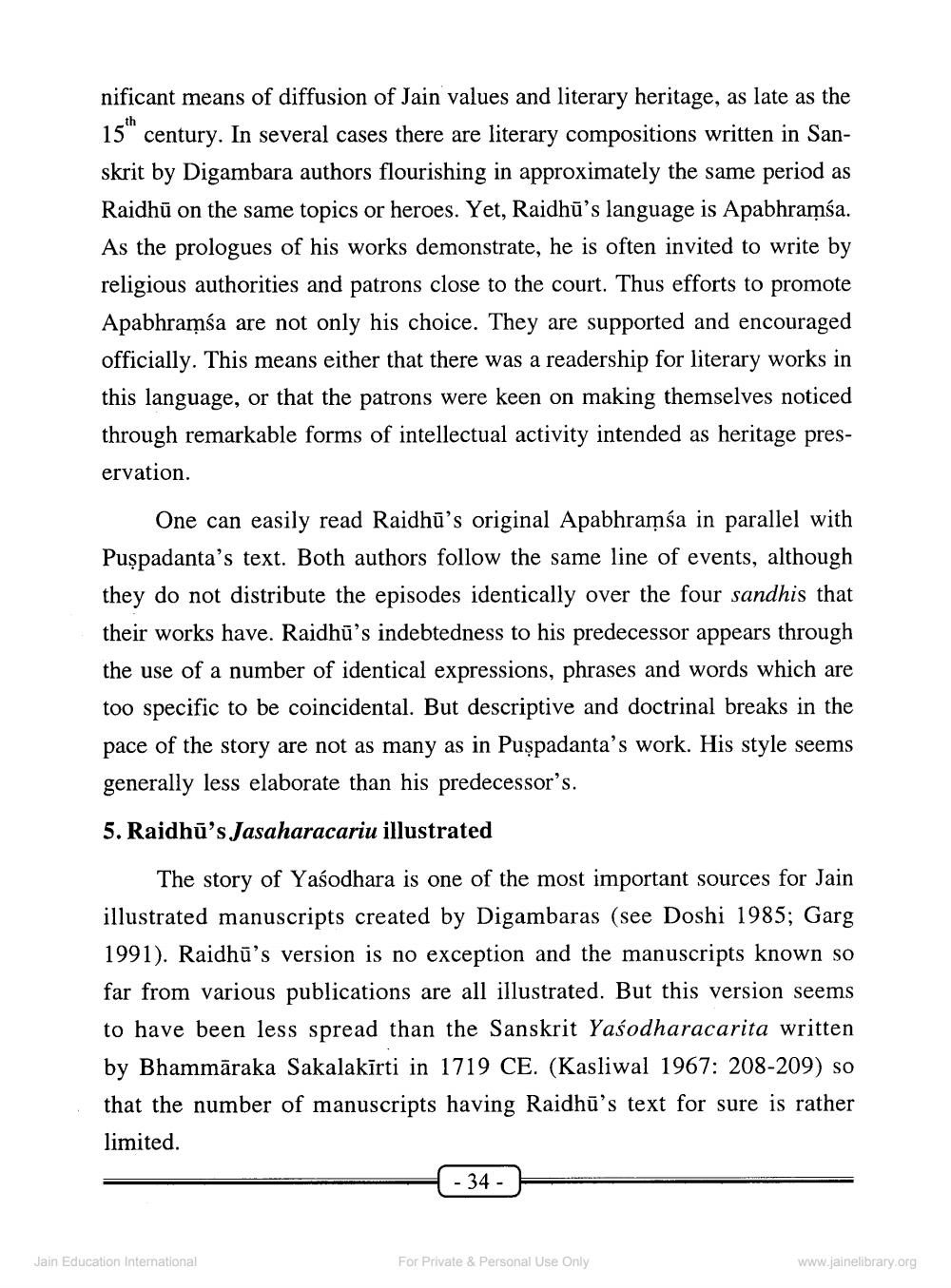________________
nificant means of diffusion of Jain values and literary heritage, as late as the 15" century. In several cases there are literary compositions written in Sanskrit by Digambara authors flourishing in approximately the same period as Raidhū on the same topics or heroes. Yet, Raidhū's language is Apabhramba. As the prologues of his works demonstrate, he is often invited to write by religious authorities and patrons close to the court. Thus efforts to promote Apabhramsa are not only his choice. They are supported and encouraged officially. This means either that there was a readership for literary works in this language, or that the patrons were keen on making themselves noticed through remarkable forms of intellectual activity intended as heritage pres
ervation.
One can easily read Raidhū's original Apabhramsa in parallel with Puşpadanta's text. Both authors follow the same line of events, although they do not distribute the episodes identically over the four sandhis that their works have. Raidhū’s indebtedness to his predecessor appears through the use of a number of identical expressions, phrases and words which are too specific to be coincidental. But descriptive and doctrinal breaks in the pace of the story are not as many as in Puşpadanta's work. His style seems generally less elaborate than his predecessor's.
5. Raidhū's Jasaharacariu illustrated
The story of Yaśodhara is one of the most important sources for Jain illustrated manuscripts created by Digambaras (see Doshi 1985; Garg 1991). Raidhū's version is no exception and the manuscripts known so far from various publications are all illustrated. But this version seems to have been less spread than the Sanskrit Yasodharacarita written by Bhammāraka Sakalakīrti in 1719 CE. (Kasliwal 1967: 208-209) so that the number of manuscripts having Raidhū's text for sure is rather limited.
- 34 -
Jain Education International
For Private & Personal Use Only
www.jainelibrary.org




